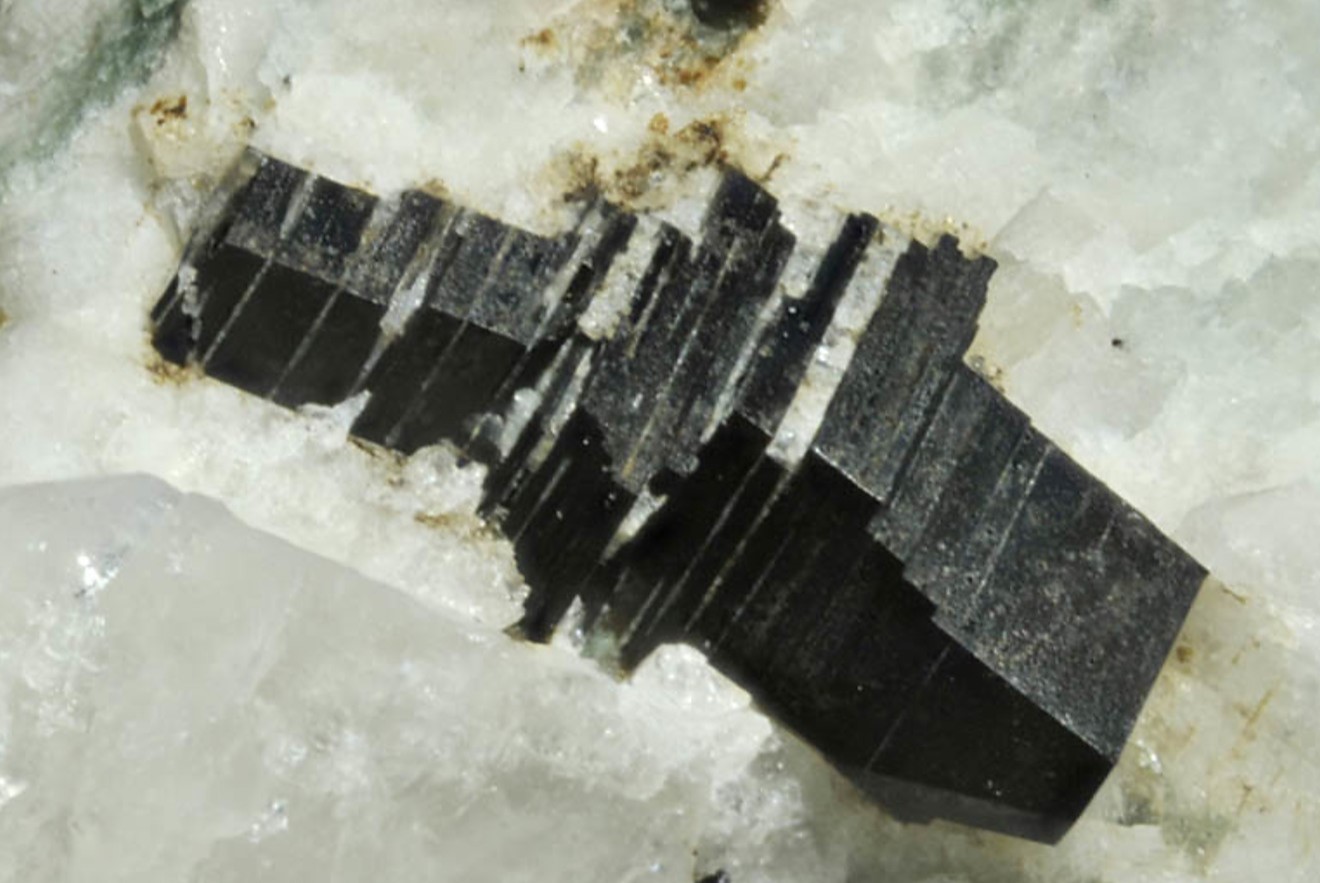
What makes Annite so special? Annite, an iron-rich mica mineral, stands out due to its unique properties and geological significance. With a chemical formula of KFe3+AlSi3O10(OH)2, it belongs to the biotite mica group. This mineral crystallizes in the monoclinic system, featuring perfect cleavage and a submetallic to vitreous luster. Found in magnesium-poor igneous and metamorphic rocks, Annite's reddish-brown to black color and brownish-white streak make it easily identifiable. Its role in potassium-argon dating helps geologists determine the age of rocks and understand Earth's magnetic history. Annite's distinct characteristics and scientific importance make it a key mineral for geologists and mineralogists alike.
Key Takeaways:
- Annite is a captivating iron-rich mineral with unique physical and optical properties. It plays a crucial role in geology, helping determine the age and formation of rocks through potassium-argon dating.
- Its reddish-brown to black color, perfect cleavage, and association with schists make annite easily identifiable. Its flexibility and use in potassium-argon dating contribute to its scientific and geological significance.
What is Annite?
Annite is a captivating mineral from the mica family, known for its iron-rich composition. Let's dive into some fascinating facts about this unique mineral.
-
Chemical Composition
Annite's chemical formula is KFe3+AlSi3O10(OH)2. It's the iron end member of the biotite mica group. -
Crystal System
Annite crystallizes in the monoclinic crystal system, a trait it shares with many mica minerals. -
Cleavage
Annite has perfect cleavage in one direction, specifically along the {001} plane. This makes it appear as thin sheets or scales. -
Color and Streak
Typically, annite exhibits a reddish-brown to black color. When powdered, it shows a brownish-white streak. -
Luster
Annite has a submetallic to vitreous luster, appearing pearly on cleavage surfaces.
Physical Properties of Annite
Understanding the physical properties of annite helps in identifying and distinguishing it from other minerals.
-
Hardness
Annite has a Mohs hardness of 2.5 to 3, making it relatively soft. -
Specific Gravity
With a specific gravity of approximately 3.3, annite is slightly denser than water. -
Optical Properties
Annite is anisotropic, meaning its optical properties vary with the direction of observation. -
Refractive Indices
Annite's refractive indices are nα = 1.625 – 1.631, nβ = 1.690, and nγ = 1.691 – 1.697. -
Pleochroism
Annite exhibits pleochroism, changing colors under different polarized light conditions.
Geological Significance of Annite
Annite plays a crucial role in geology, providing insights into the age and formation of rocks.
-
2V Angle
The 2V angle for annite is between 12° and 36°, helping determine the mineral's orientation. -
Occurrence
Annite is commonly found in magnesium-poor igneous and metamorphic rocks. -
Type Locality
The type locality for annite is Cape Ann, Rockport, Essex County, Massachusetts, USA. -
Other Localities
Annite is also found on Pikes Peak, El Paso County, Colorado, and various other locations worldwide. -
Geological Significance
Annite is used for potassium-argon dating, helping determine the absolute age of rocks older than 1000 years.
Annite's Associations and Crystal Habits
Annite often occurs with other minerals and exhibits unique crystal habits.
-
Association with Other Minerals
Annite is often found with minerals like fluorite, zircon, and muscovite. -
Crystal Habit
Annite typically forms in "blocks" of thin sheets or as aggregations of foliated thin scales. -
Twinning
Annite exhibits contact twins with a composition surface on {001} and a twin axis {310}. -
Fracture
Annite has an uneven fracture, a result of its monoclinic crystal structure. -
Tenacity
Annite is flexible due to the weak interlayer bonds in its structure.
Optical and Physical Identification
Identifying annite involves examining its optical and physical properties.
-
Relief
Annite has high relief, making it stand out in plane polarized light. -
Index of Refraction
The index of refraction for annite varies with direction, with nα = 1.625 – 1.631, nβ = 1.690, and nγ = 1.691 – 1.697. -
Anisotropy
Annite is anisotropic, meaning its optical properties vary depending on the direction of observation. -
Pleochroic Colors
Annite exhibits pleochroism, changing colors under different polarized light conditions, typically brown and dark brown. -
Diagnostic Features
Annite's perfect cleavage, submetallic to vitreous luster, reddish-brown to black color, and brownish-white streak make it easily identifiable.
Geological Uses and Classification
Annite's uses in geology and its classification within the mica family are noteworthy.
-
Geological Uses
Annite is used for potassium-argon dating, essential for determining the age of rocks older than 1000 years. -
Mineralogical Classification
Annite belongs to the phyllosilicate group and is classified under the mica family. -
Crystal Structure
Annite has a monoclinic crystal structure, typical for mica minerals. -
Physical Properties
Annite's physical properties include perfect cleavage, submetallic to vitreous luster, reddish-brown to black color, and brownish-white streak. -
Association with Schists
Annite is commonly found in schists, metamorphic rocks often associated with quartz, feldspar, and mica.
Occurrence and Geological History
Annite's occurrence in various rock types and its geological history provide insights into its formation.
-
Occurrence in Granites
Annite can also be found in granites, typically as crystals or aggregates within these rocks. -
Geological History
Annite forms through the metamorphism of igneous rocks, particularly those deficient in magnesium. -
Mineralogical Similarities
Annite shares many similarities with other mica minerals like muscovite and biotite. -
Diagnostic Techniques
Identifying annite involves several diagnostic techniques, including pleochroism, anisotropy, and perfect cleavage. -
Scientific Importance
Annite's scientific importance lies in its use for potassium-argon dating, providing valuable information about the age of rocks and the local magnetic field.
Annite's Role in Geology
Annite, with its iron-rich composition and distinctive properties, is a standout in the mica family. Its monoclinic crystal structure, perfect cleavage, and pleochroism make it easily identifiable. Found in igneous and metamorphic rocks, annite is often associated with minerals like quartz, albite, and pyrite. Its potassium content is crucial for potassium-argon dating, helping geologists determine the age of rocks and understand the local magnetic field.
From its reddish-brown to black color to its submetallic luster, annite's physical characteristics are unique. Its flexibility and high relief make it a fascinating subject for mineralogists. Whether in schists or granites, annite's presence tells a story of geological processes and history. Understanding annite not only enriches our knowledge of the mica family but also provides insights into the Earth's past.
Frequently Asked Questions
Was this page helpful?
Our commitment to delivering trustworthy and engaging content is at the heart of what we do. Each fact on our site is contributed by real users like you, bringing a wealth of diverse insights and information. To ensure the highest standards of accuracy and reliability, our dedicated editors meticulously review each submission. This process guarantees that the facts we share are not only fascinating but also credible. Trust in our commitment to quality and authenticity as you explore and learn with us.


